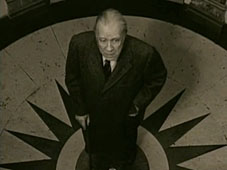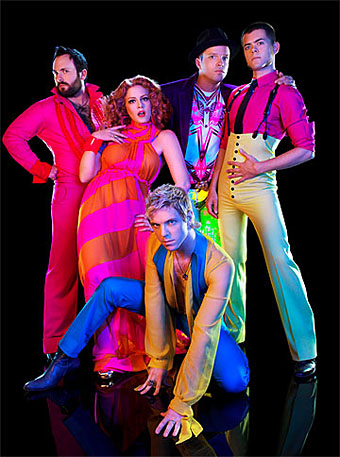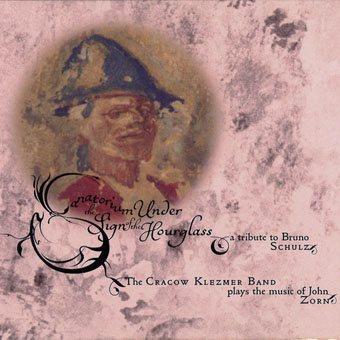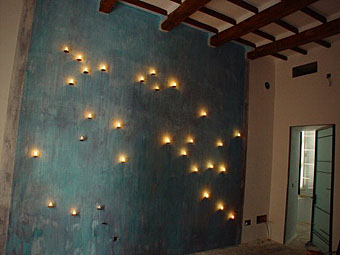
In the vestibule, candles are arranged in the shape of the constellation Aquarius.
Hotel Tressants in Menorca
ArchitectureWeek
21 January 2004
When Italo Calvino wrote his 1972 novel about magical cities based on places he imagined Marco Polo might have visited, he was probably not thinking specifically of the Spanish island of Menorca (Minorca).
The city of Sophronia is made up of two half-cities. In one there is the great roller coaster with its steep humps, the carousel with its chain spokes, the Ferris wheel of spinning cages, the death-ride with crouching motorcyclists, the big top with the clump of trapezes hanging in the middle. The other half-city is of stone and marble and cement, with the bank, the factories, the palaces, the slaughterhouse, the school, and all the rest. One of the half-cities is permanent, the other is temporary… And so every year the day comes when the workmen remove the marble pediments, lower the stone walls, the cement pylons… – Italo Calvino, Invisible Cities.
But when Menorquin architect Fernando Pons Vidal and Italian designer Chiara Fabiani conceived a “new” hotel in the renovation of old townhouses on that Mediterranean island, they had Calvino’s Invisible Cities foremost in their design imaginations.
The eight-room hotel was recently completed in the ancient town of Ciutadella, on narrow streets near the cathedral. It was built from two adjacent 200-year-old houses. But the site has been occupied far longer than that. During excavation, archaeologists found human remains thought to date back to ancient Roman times.
In renovating the aged structure, the architect retained old stone arches and vaults, but also brought in modern-day steel – though with substantial difficulty, given the restricted site.
Tressants (three saints) takes its name from the three streets that surround the hotel in the heart of the city. From the outside, the building resembles a rather ordinary townhouse for this part of town, with old terra cotta roof tiles and repaired facades of local stone. Once inside, however, the differences are striking.
Modern finishes and hand-painted frescoes were applied to recall both the city’s history and Calvino’s tales. In the reception area, candles are arranged on one wall in the shape of the constellation of Aquarius. There’s a window in the floor for viewing the illuminated pool below. An interior staircase is topped by a cupola with skylights.
Down a few steps from the entry are the main salon with a handmade floor-to-ceiling fireplace and the “comedor” dining area with arched ceilings. In the vaulted cellar, the spa features a 7- by 46-foot (2- by 14-meter) pool with an overflow edge along the full length. It is illuminated by color-changing, fiber-optic lights.
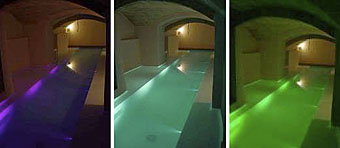
Throughout Tressants’ interior are fixtures of natural materials, designed by local craftsmen. Custom ironwork was created for the doors, balconies, and terraces. The rooftop terrace offers views of the cathedral, the old town, and the neighboring, more heavily touristed island of Mallorca.
Guest Rooms by the Book
On the middle floors of the five-level, 11,000-square-foot (1000-square-meter) hotel are the eight Calvino-inspired guestrooms. They are each decorated differently, representing one of the “Invisible Cities.”
For instance, Calvino writes:
“The traveler, arriving, sees two cities: one erect above the lake, and the other reflected, upside down… the Valdrada down in the water contains not only all the flutings and juttings of the facades that rise above the lake, but also the rooms’ interiors with ceilings and floors…”
The suite representing the city of Valdrada features doors with blue underneath and yellow above, with stars in the children’s room, and a large painting behind the bed.
Also:
“The city of Zenobia… though set on dry terrain, it stands on high pilings, and the houses are of bamboo and zinc, with many platforms and balconies placed on stilts at various heights, crossing one another, linked by ladders and hanging sidewalks…”
“…If you ask an inhabitant of Zenobia to describe his vision of a happy life, it is always a city like Zenobia that he imagines, with its pilings and its suspended stairways, a Zenobia perhaps quite different, a-flutter with banners and ribbons, but always derived by combining elements of that first model.”
Artistic features in the ceiling and floor of Zenobia room reflect these sentiments symbolically, while the level changes and balustrade reflect the Calvino description literally.
In 1993, Menorca was declared a Biosphere Reserve, giving the entire island an environmental protection status. With architecture, environment, historic rock quarries, and colorful festivals, it is a special place to visit.
Update: Seems like the hotel website lapsed so here’s the Internet Archive mirror with additional photos.



